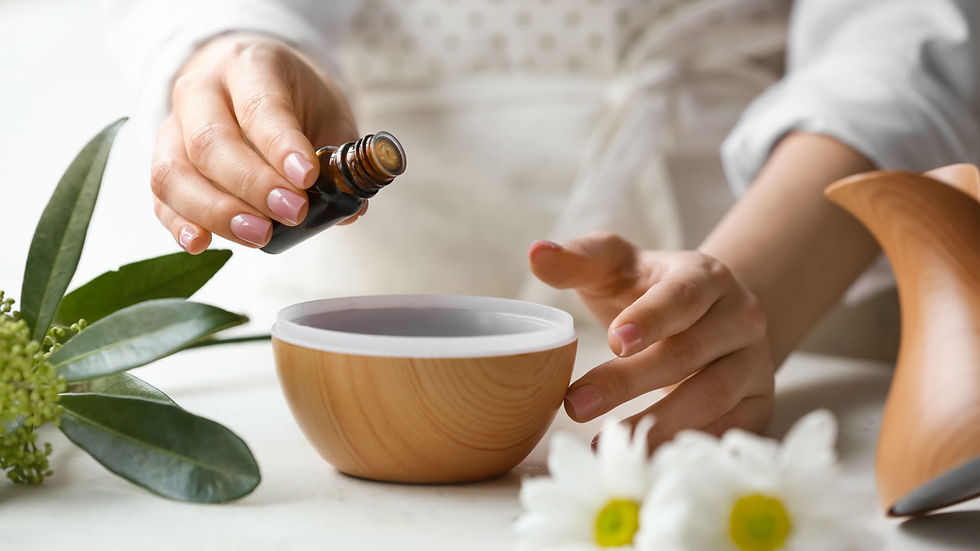Oxidative stress and ways to neutralize its effects
- Калмикова Ніна

- Dec 24, 2023
- 4 min read

Oxidative stress is an imbalance between stressors and antioxidants in favor of stressors, resulting in the formation of free radicals in the body. Oxidative stress contributes to the development of numerous disorders in the body, including Alzheimer's disease, dementia, autoimmune diseases, malignant tumors, and cardiovascular diseases. Excess free radicals can damage body tissues and accelerate the aging process. This process can be facilitated by:
external factors - air pollution, ultraviolet radiation, alcohol and nicotine consumption, medications, toxic substances in the environment, etc.
the state of the body in case of chronic diseases, stress, physical exhaustion, inflammatory processes, etc.
Free or acidic radicals that do not exceed the normal range are involved in collagen metabolism, the synthesis of biologically active substances, and the formation of nonspecific immunity. Excessive free radicals can lead to the destruction of proteins and nucleic acids that are essential for cellular structures.
The state of the modern environment
One of the factors contributing to the imbalance between stressors and antioxidants is also the state of the modern environment. For millions of years, there was effective functioning and reproduction when living organisms independently adapted to natural environmental changes. With the advent of humans, who are capable of transforming natural conditions, industrial, agricultural and household waste began to enter the environment. Adaptation to such changes in physical and chemical parameters was not developed by the evolutionary process and they began to pose a real threat to human health.
Xenobiotics and their role in the development of pathological changes in the human body
Among the anthropogenic factors, a group of reproductive toxicants and hormone-like xenobiotics is particularly noteworthy. The most well-known of these are DDT and its metabolites, pesticides: heptachlor, tamoxifen, hexachlorane, methoxychlor, biphenyl ethers, etc. The negative impact of man-made products on the human body occurs almost everywhere. We encounter substances foreign to the body on the street, at home and at work. Food contaminated with hormones and trans fats is particularly dangerous. Studies conducted in the United States have shown that chlorinated pesticide residues are found in sausages, cheese, ice cream, butter, semi-smoked sausages, and a number of other products that people, and especially children, love. Once in the body, xenobiotics damage cells and cause mutations, trigger malignant processes and lead to hereditary diseases. Most often, children become victims of harmful substances. The child feels tired all the time, the central nervous system and gastrointestinal tract are disrupted, and interest in the surrounding processes decreases. The number of colds and viral diseases increases.
Methods of inactivation, reducing the impact of xenobiotics on human health
Over the past 10-20 years, scientists have noted an increase in the toxic load on the human body. At the same time, the protective mechanism of detoxification remains - proper nutrition. For the protection to be effective, the human diet should include amino acids, vitamins, minerals, trace elements, some fats, carbohydrates, and some groups of antioxidants. In order for these food components to be properly absorbed and utilized by the body for their intended purpose, a healthy liver is needed as the body's "biochemical laboratory". It processes, neutralizes, and eliminates toxins that enter the body with medicines and food along with bile.

Antioxidants, their sources, effects and benefits
The main source of antioxidants is healthy natural food, which contains substances necessary for the human body.
Proteins and amino acids are involved in the repair of liver cells and the immune system. They bind toxicants and help transport proteins remove xenobiotic waste products. The main sources of amino acid proteins necessary for the body are spinach, cod, eggs, mozzarella, peas, lean pork, pumpkin seeds, cabbage, inanimate cheese, sardines, pine and walnuts, beets, and parsley.
Vitamins and oxidants protect immune cells from damage, accelerate the oxidation and breakdown of many xenobiotics. Their sources include citrus fruits, curly kale, green tea, grape seeds and skins, seaweed, rose hips, blackberries, persimmons, chicory stems, garlic, black currants, eggplant, red and orange vegetables, walnuts, wheat germ, wheat bran, nettle leaves.
Minerals, especially magnesium, selenium, and zinc, can provide reliable support for the immune system. To do this, you should consume seafood, eggs, legumes, liver, cereals, lean meat, and kidneys.
The right fats reduce cell membranes and prevent the penetration of xenobiotics. Their sources are fatty fish, walnuts, eggs, and flax seeds.
Carbohydrates block xenobiotics, so it is necessary to consume dietary fiber, such as wheat and oat bran, fruit and vegetable purees, seaweed, and mashed beans.
Phytoncides are found in citrus fruits, dogwood, ginger, turmeric, onions, garlic, carrots, tomatoes, red peppers, and some varieties of apples. The substance has antiviral, antifungal, and antimicrobial effects, and also increases the body's defenses.
How to give your body the protection it needs
To protect your body from the negative effects of xenobiotics, you need to regularly consume all of the above components. To do this, you need to closely monitor your diet and consume more foods that contain these nutrients. How to do this at home is quite difficult. It is more rational to use the results of scientific research. Today, research in the field of nutrition has made it possible to create a whole range of cocktails. Their regular use provides antioxidant protection for the whole day, as well as:
Helps to slow down the aging process at the cellular level
Participates in the prevention of tumor processes
Normalizes blood cholesterol levels
Improves memory
Has anti-inflammatory and antibacterial effects
The balanced composition of tasty and healthy drinks contains ingredients that fight free radicals and help increase energy levels. Antioxidant cocktails are included in the course of treatments at the Amospring center, and you can also choose cocktails individually and purchase them for independent consumption. It is recommended that you contact a consultant to develop a cocktail card for you and your family members.



